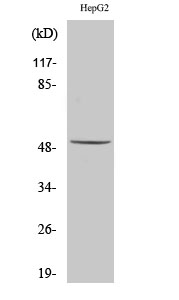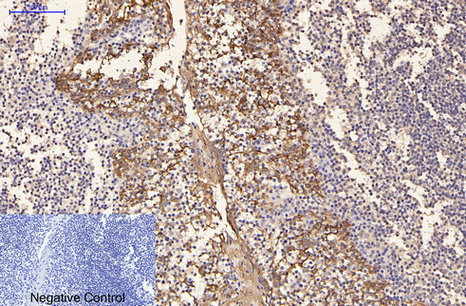Total Cytokeratin 16 Cell-Based Colorimetric ELISA Kit
- Catalog No.:KA3303C
- Applications:ELISA
- Reactivity:Human;Mouse;Rat
- Gene Name:
- KRT16
- Human Gene Id:
- 3868
- Human Swiss Prot No:
- P08779
- Mouse Swiss Prot No:
- Q9Z2K1
- Storage Stability:
- 2-8°C/6 months
- Other Name:
- Keratin, type I cytoskeletal 16 (Cytokeratin-16) (CK-16) (Keratin-16) (K16)
- Detection Method:
- Colorimetric
- Background:
- disease:Defects in KRT16 are a cause of pachyonychia congenita type 1 (PC1) [MIM:167200]; also known as Jadassohn-Lewandowsky syndrome. PC1 is an autosomal dominant ectodermal dysplasia characterized by hypertrophic nail dystrophy resulting in onchyogryposis (thickening and increase in curvature of the nail), palmoplantar keratoderma, follicular hyperkeratosis, and oral leukokeratosis. Hyperhidrosis of the hands and feet is usually present.,disease:Defects in KRT16 are a cause of unilateral palmoplantar verrucous nevus (UPVN) [MIM:144200]. UPVN is characterized by a localized thickening of the skin in parts of the right palm and the right sole.,disease:Defects in KRT16 are the cause of palmoplantar keratoderma non-epidermolytic (NEPPK) [MIM:600962]. NEPKK is a dermatological disorder characterized by focal palmoplantar keratoderma with oral, genital, and follicular lesions.,disease:KRT16 and KRT17 are coexpressed only in pathological situations such as metaplasias and carcinomas of the uterine cervix and in psoriasis vulgaris.,mass spectrometry: PubMed:11840567,miscellaneous:There are two types of cytoskeletal and microfibrillar keratin, I (acidic) and II (neutral to basic) (40-55 and 56-70 kDa, respectively).,similarity:Belongs to the intermediate filament family.,subunit:Heterodimer of a type I and a type II keratin. KRT16 associates with KRT6 isomers. Interacts with TCHP. Interacts with TRADD.,tissue specificity:Expressed in the hair follicle, nail bed and in mucosal stratified squamous epithelia and, suprabasally, in oral epithelium and palmoplantar epidermis. Also found in luminal cells of sweat and mammary gland ducts.,
- Function:
- cytoskeleton organization, ectoderm development, cell proliferation, epidermis development, intermediate filament-based process, intermediate filament cytoskeleton organization,
- Expression:
- Expressed in the corneal epithelium (at protein level).
- June 19-2018
- WESTERN IMMUNOBLOTTING PROTOCOL
- June 19-2018
- IMMUNOHISTOCHEMISTRY-PARAFFIN PROTOCOL
- June 19-2018
- IMMUNOFLUORESCENCE PROTOCOL
- September 08-2020
- FLOW-CYTOMEYRT-PROTOCOL
- May 20-2022
- Cell-Based ELISA│解您多样本WB检测之困扰
- July 13-2018
- CELL-BASED-ELISA-PROTOCOL-FOR-ACETYL-PROTEIN
- July 13-2018
- CELL-BASED-ELISA-PROTOCOL-FOR-PHOSPHO-PROTEIN
- July 13-2018
- Antibody-FAQs


